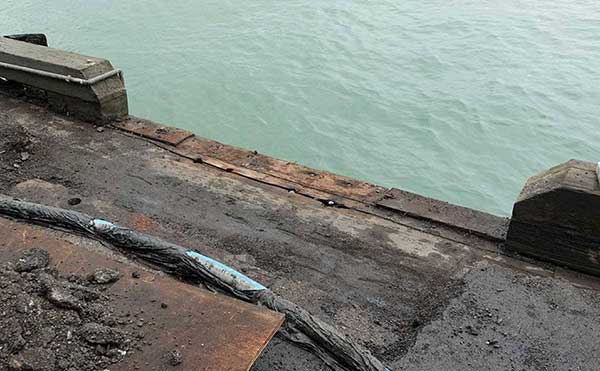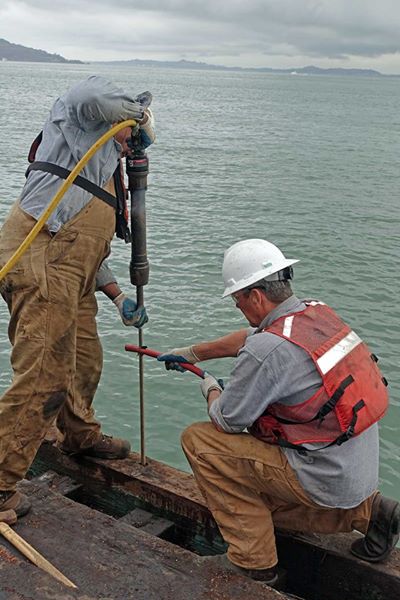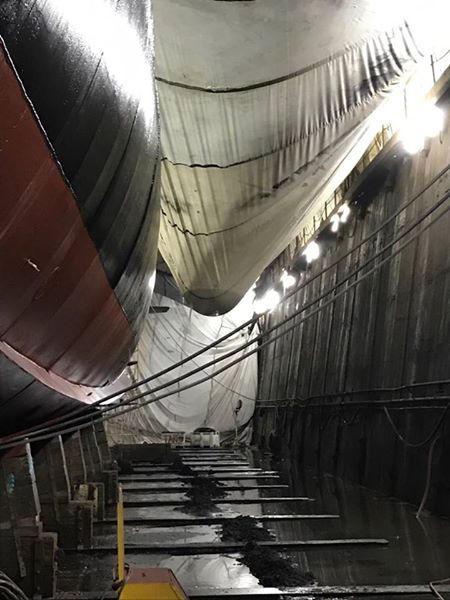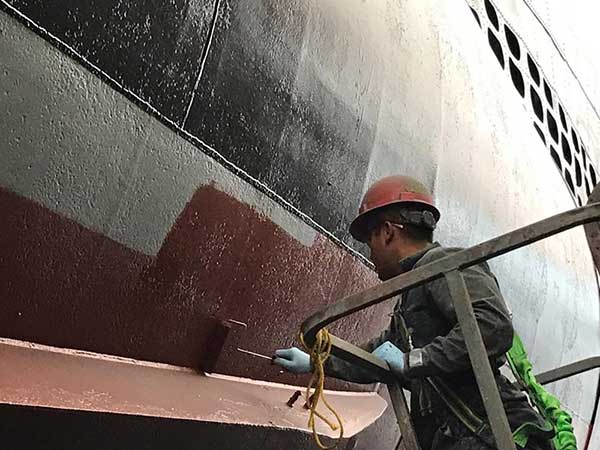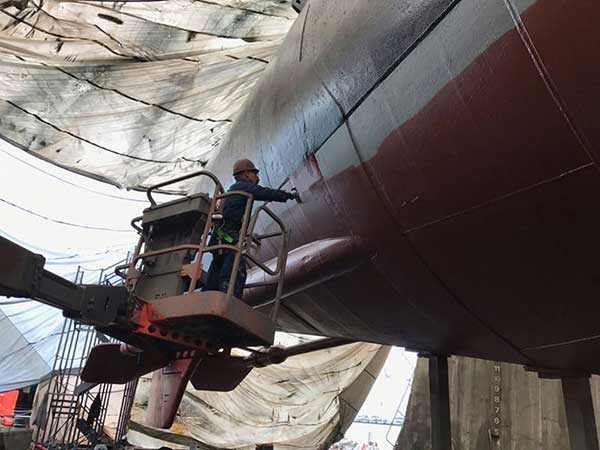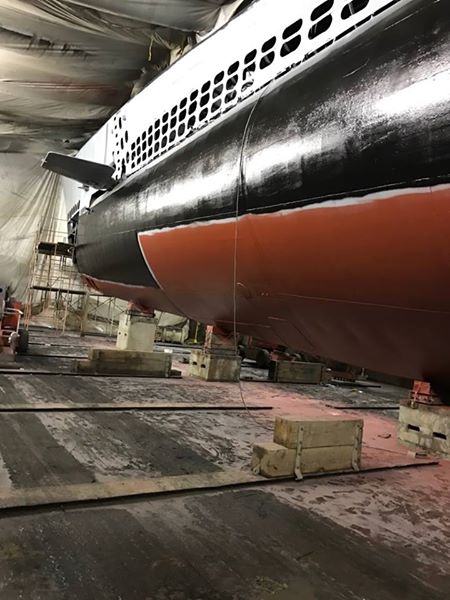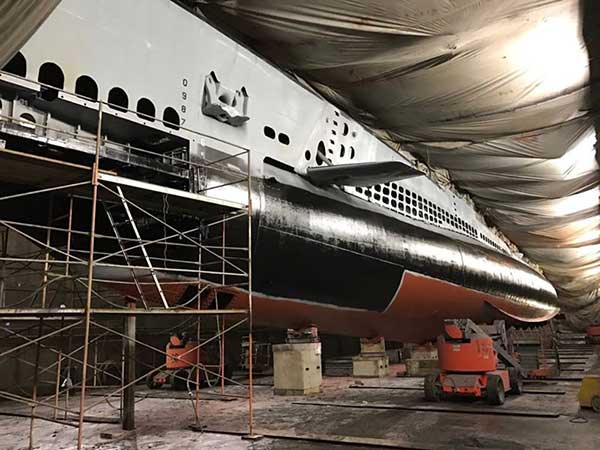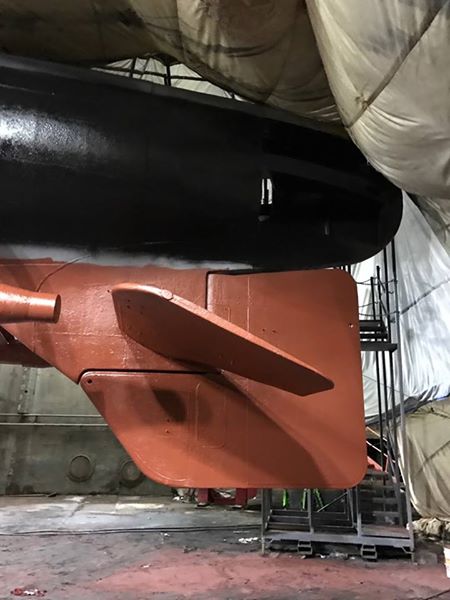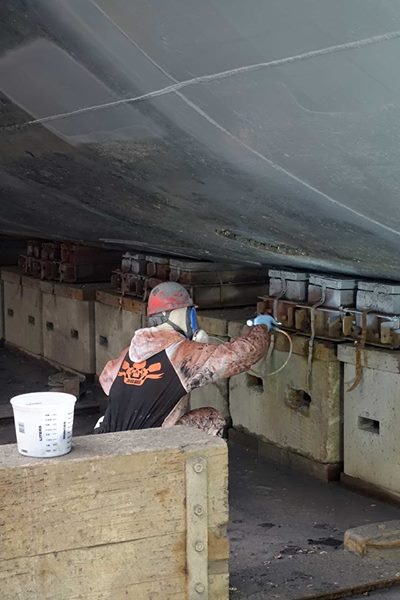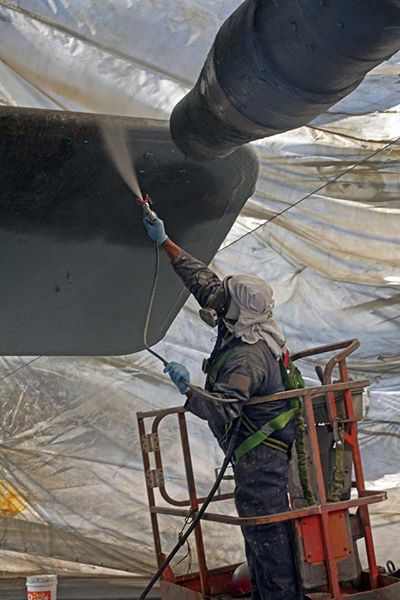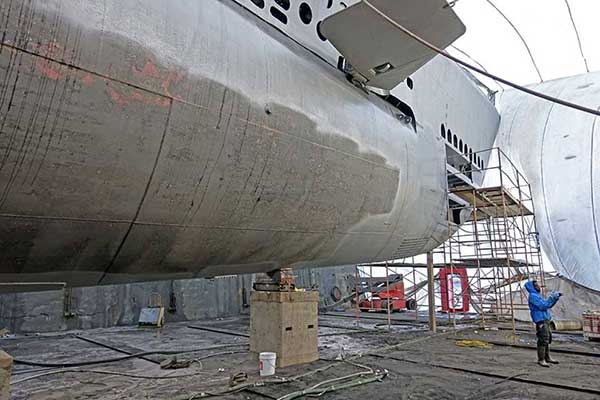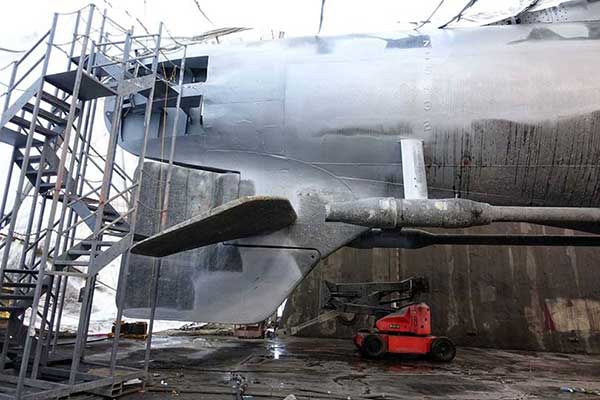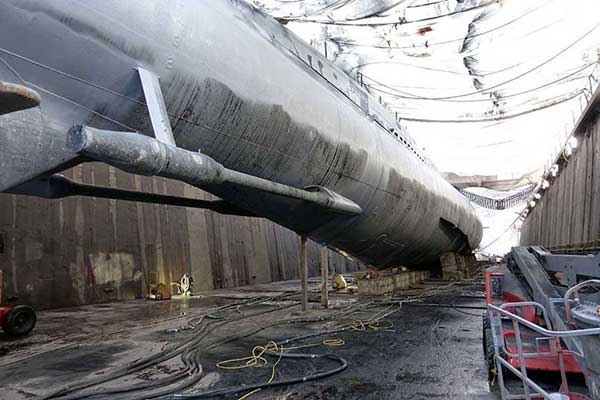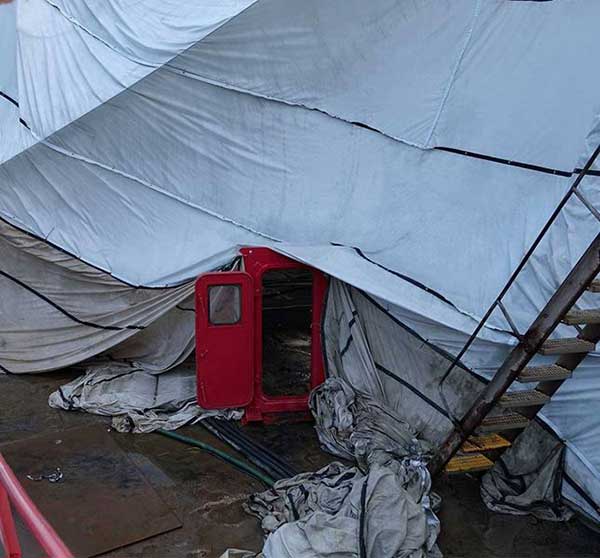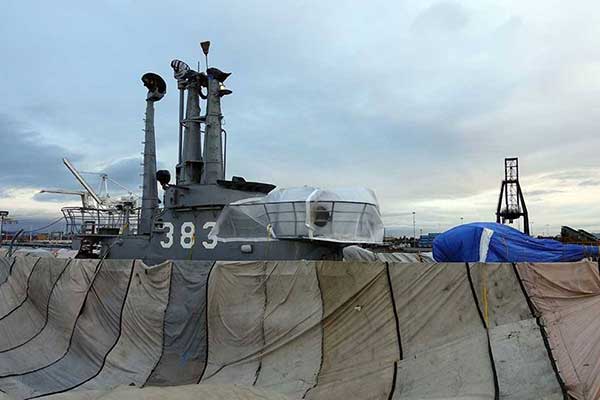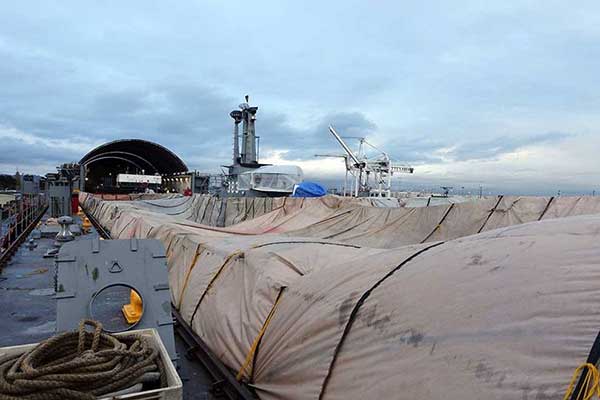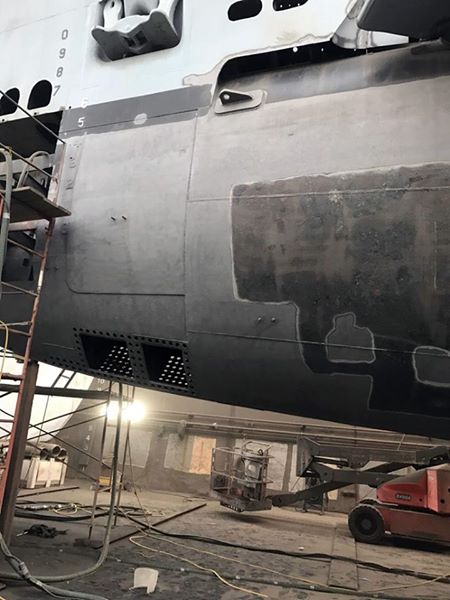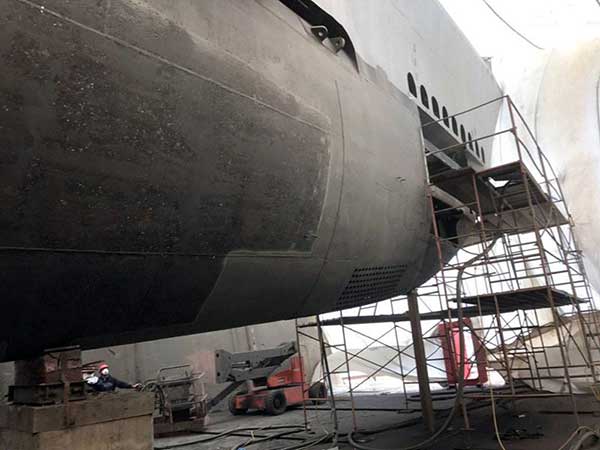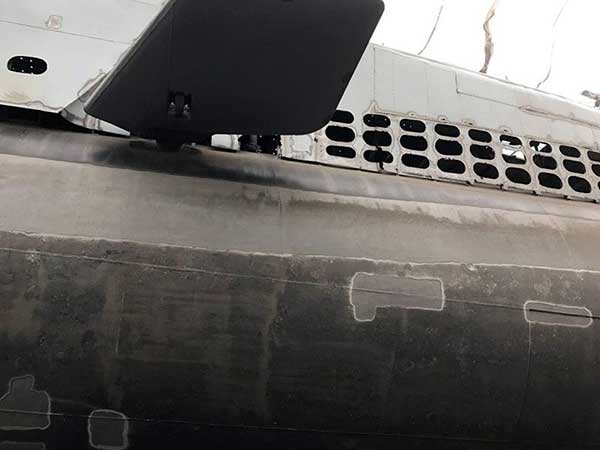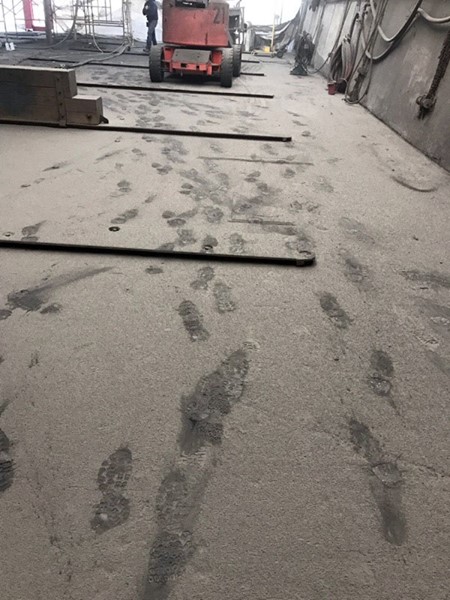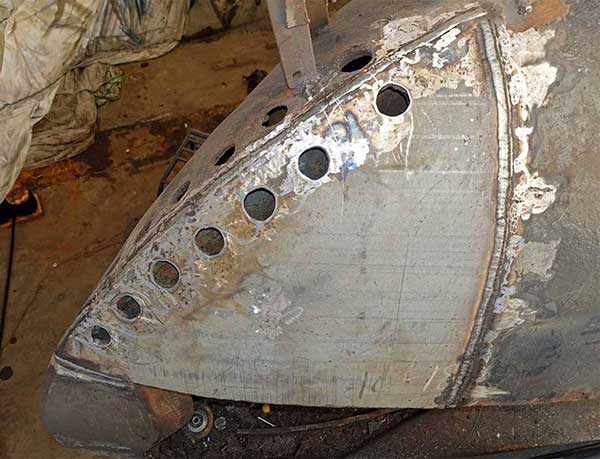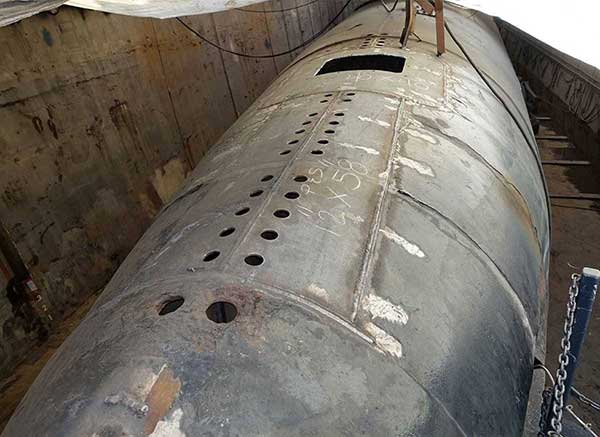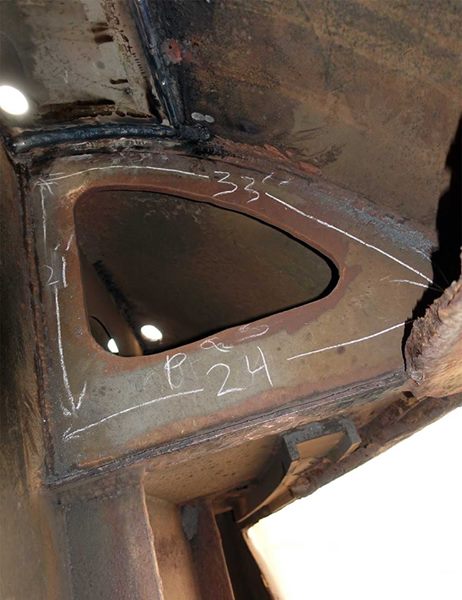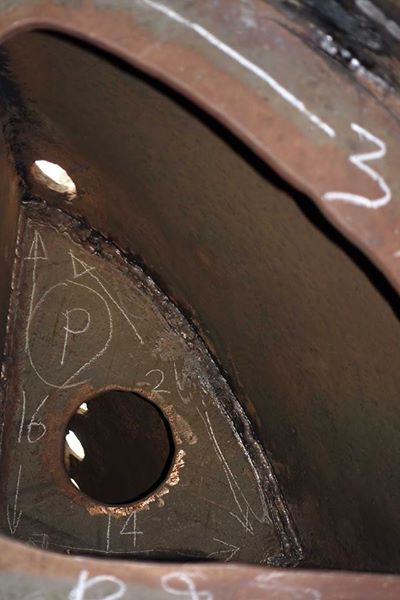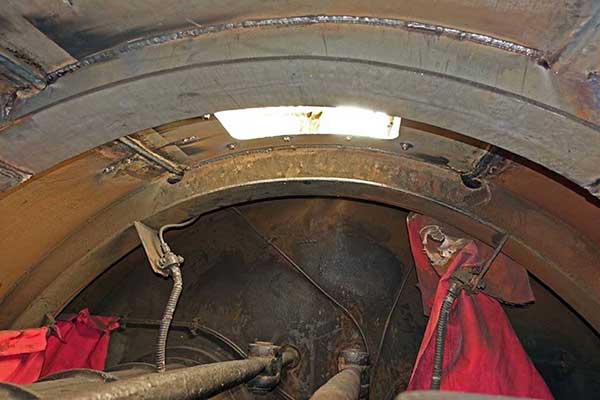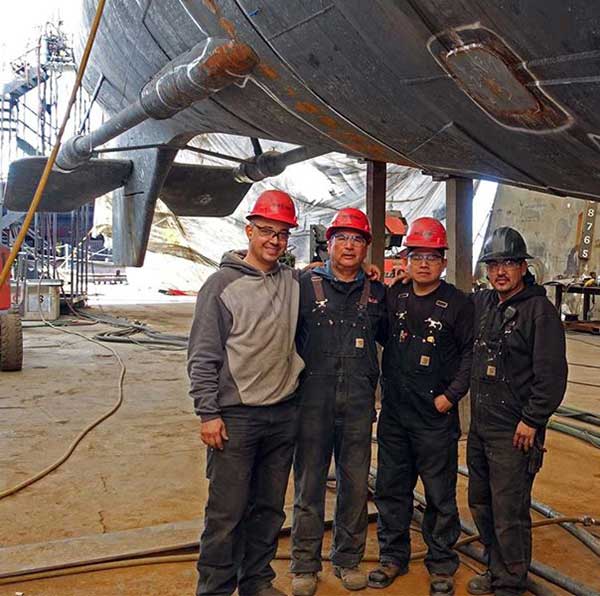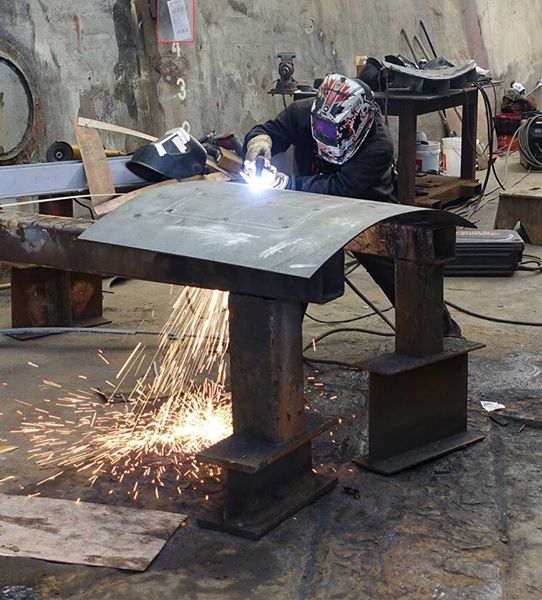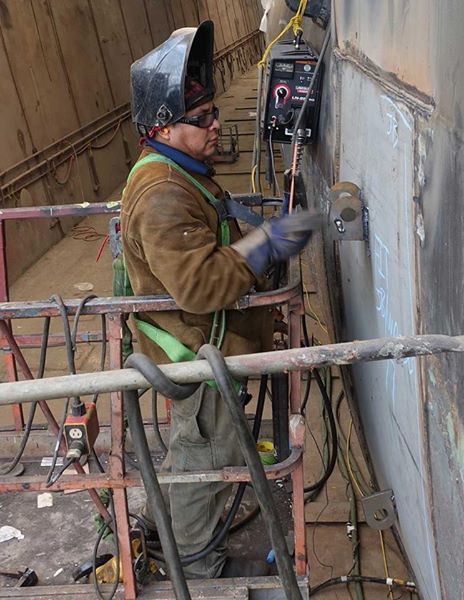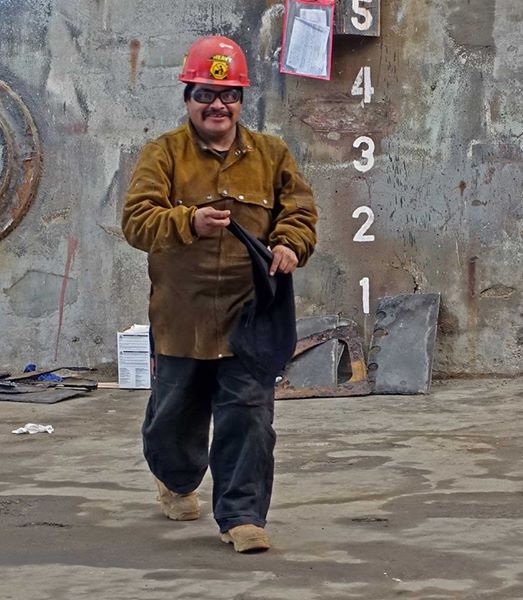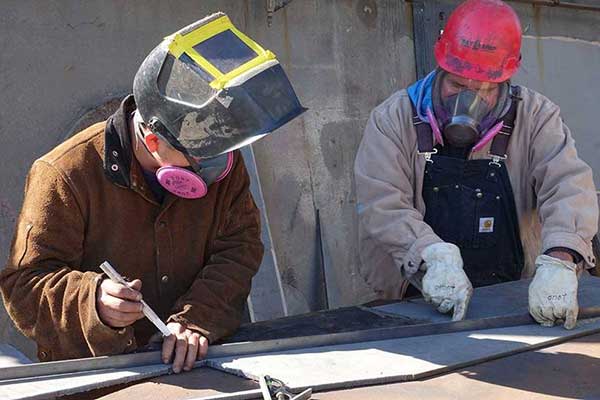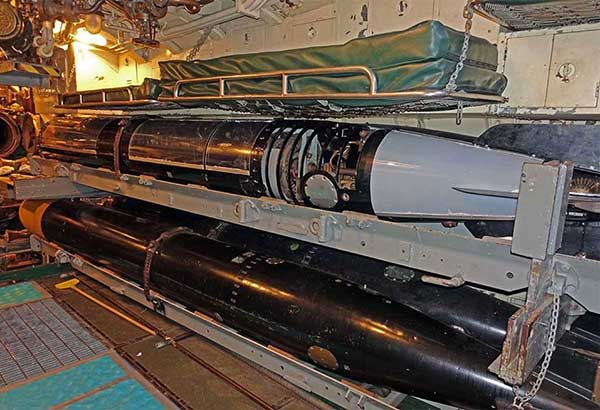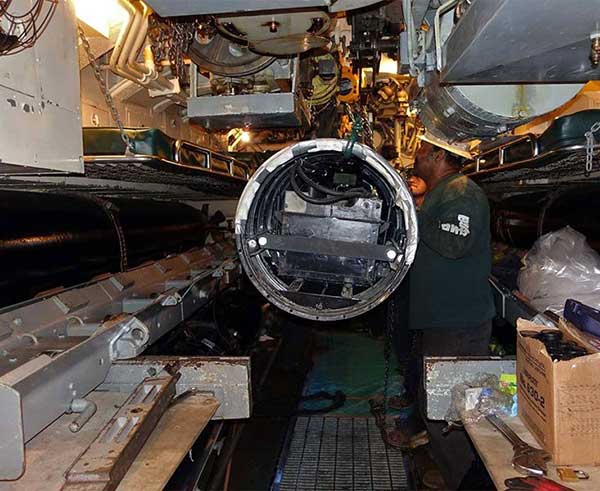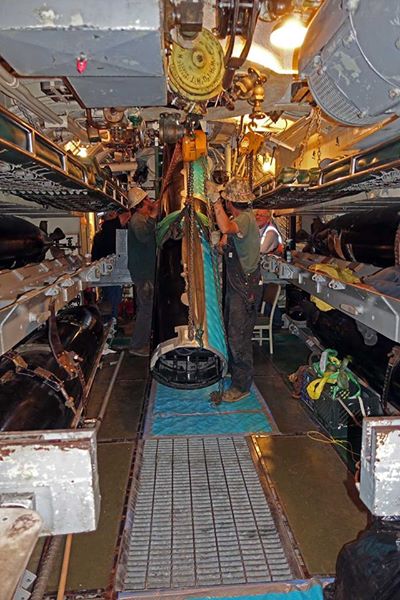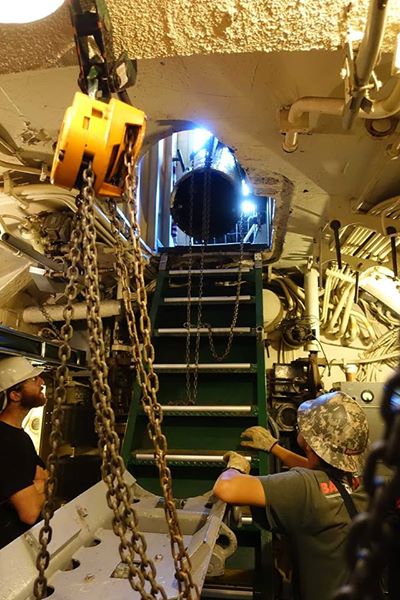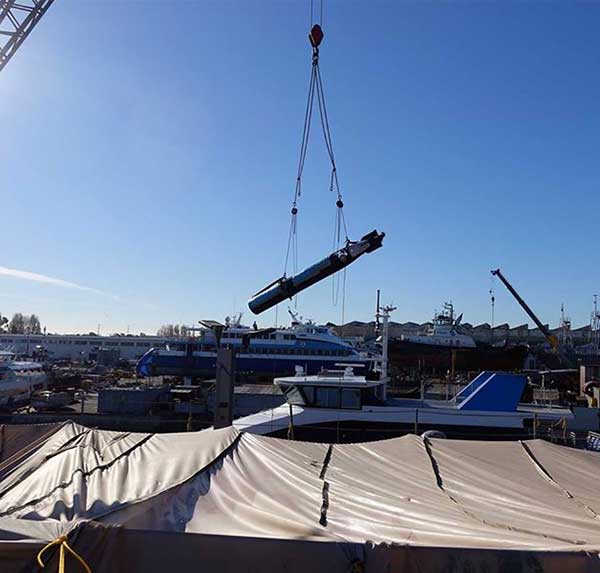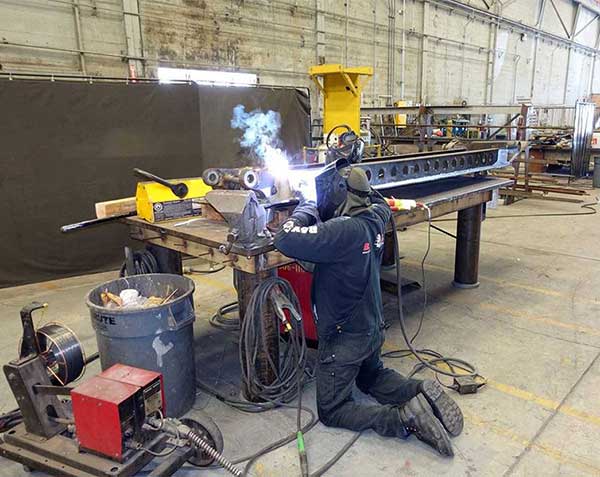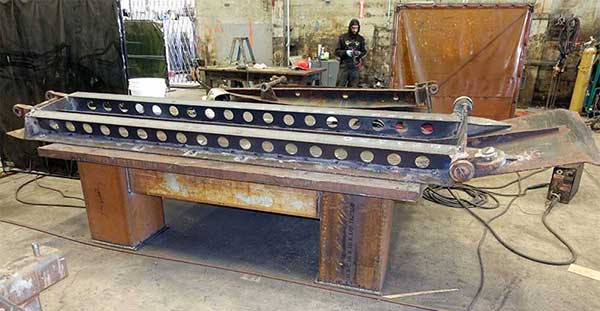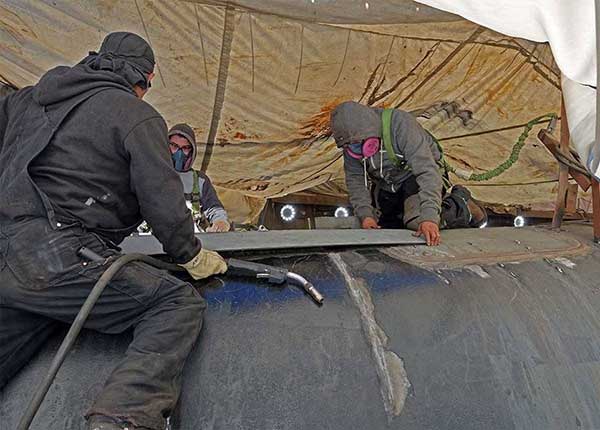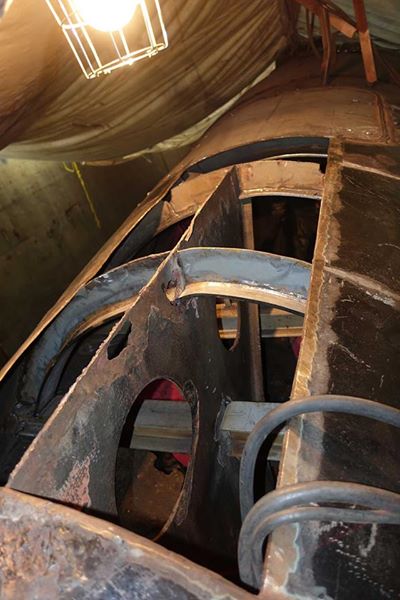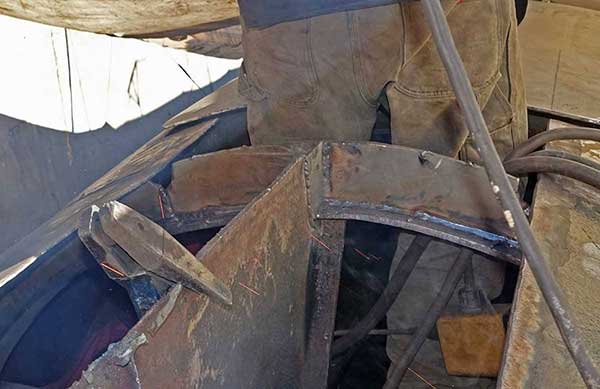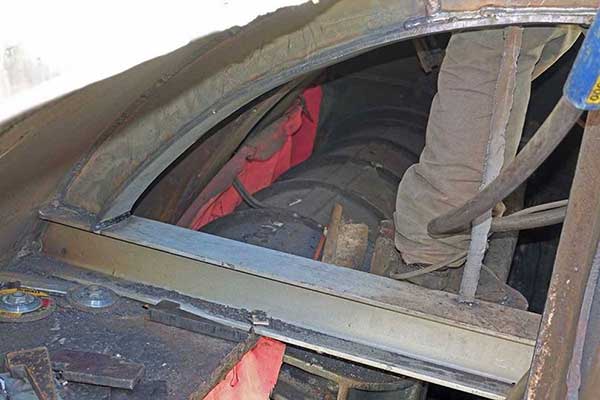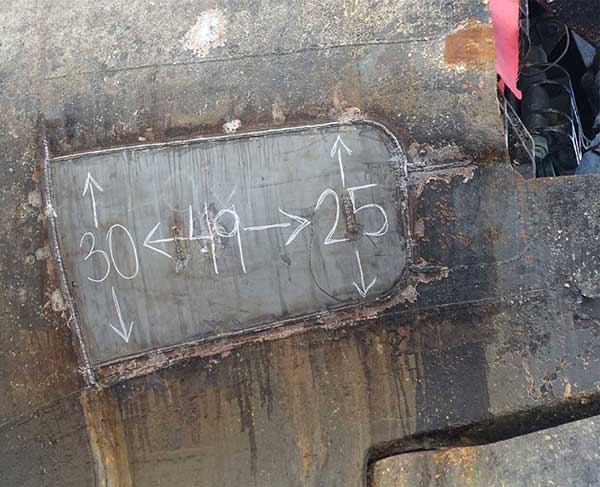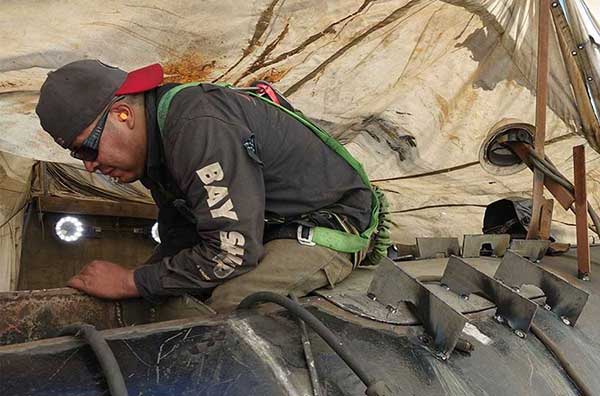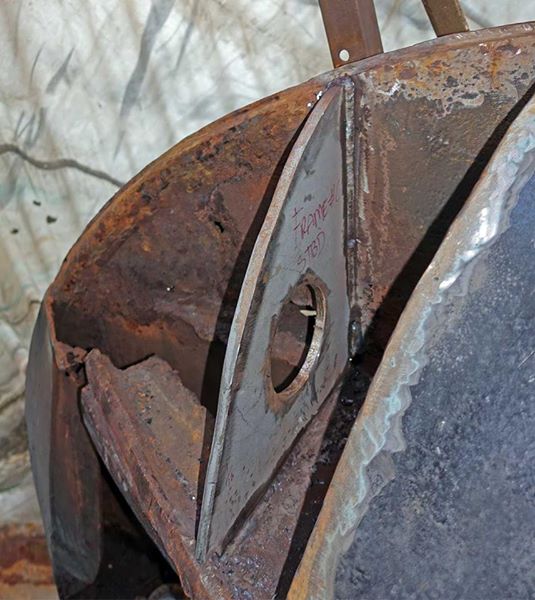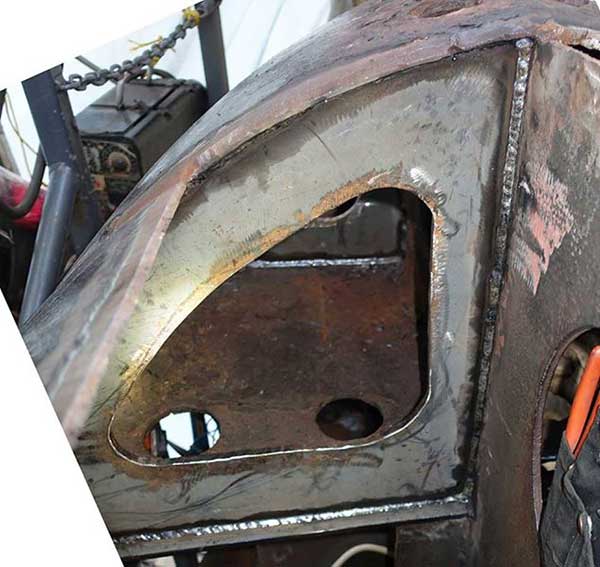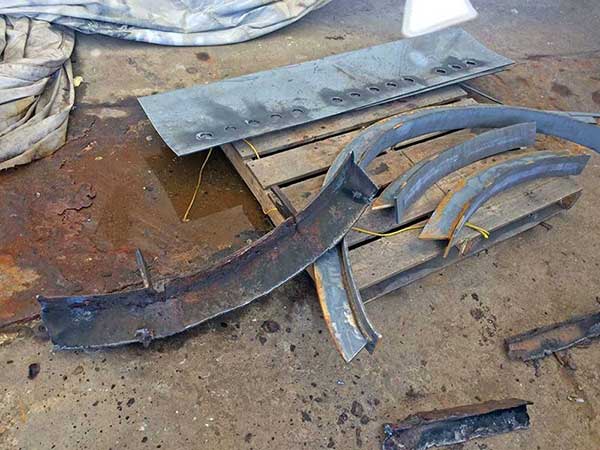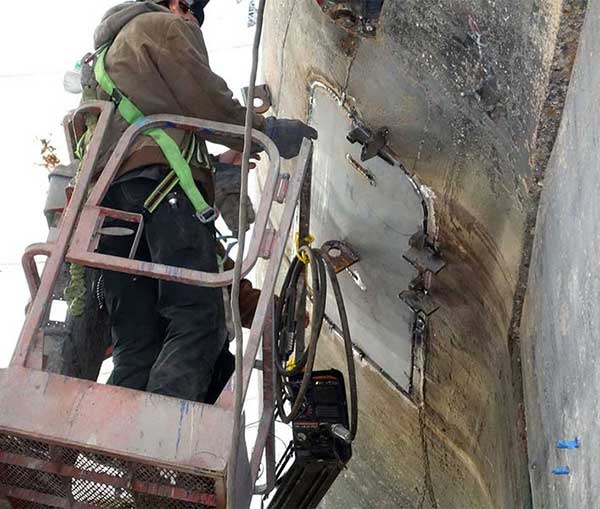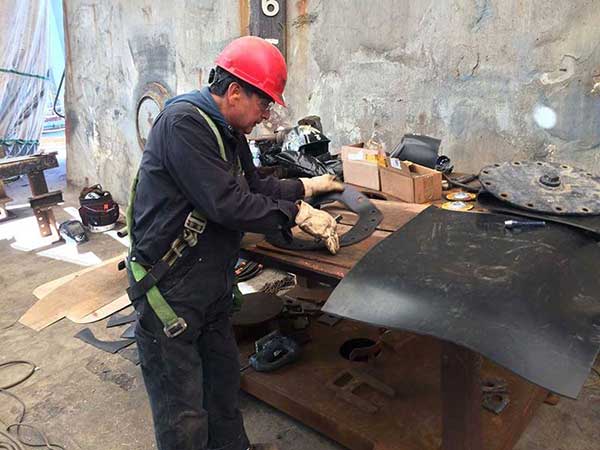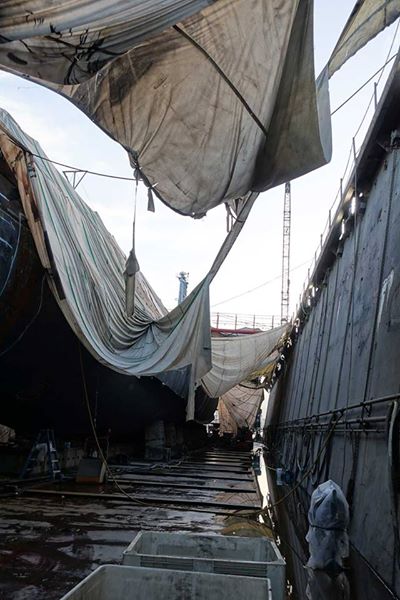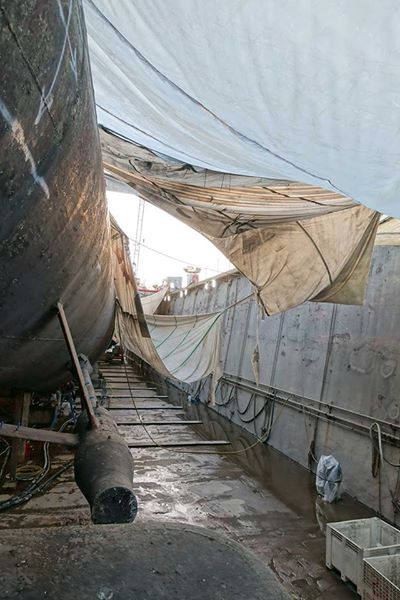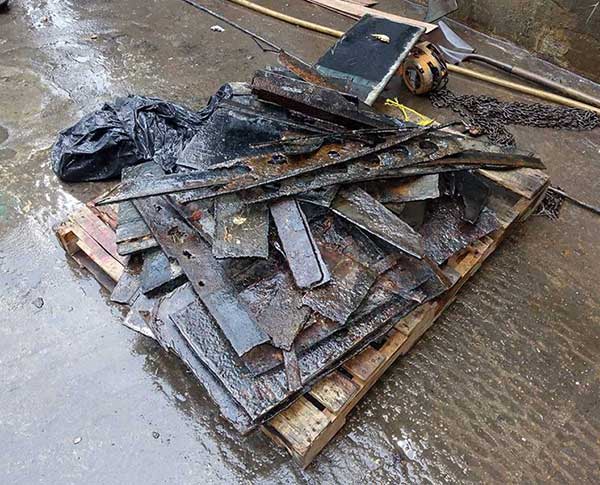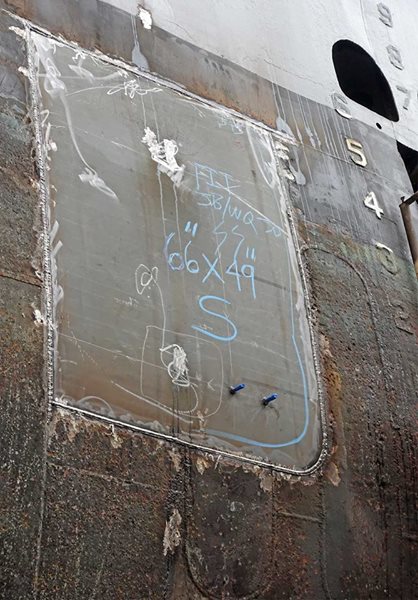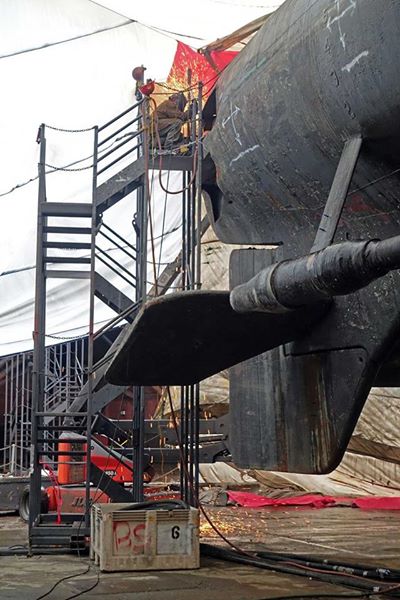This page is a collection of blog posts that were created during the 2016 drydocking of Pampanito. The posts have only had minimal editing and are meant to show the evolution 2016 drydocking, not to replace a formal report. The dates below the posting and photos are when posted and are usually the same or next day after they were taken.
Index: Blog Entries:
Our landlord, the Port of San Francisco, is working on the safety of the cleats that Pampanito uses to attach herself to the pier. We really did not think it was safe to go another winter season with the loose cleats. When they pulled the cleats they found rotted wood, split wood, and bad fastenings. The boat will be much safer when she returns because of this work.
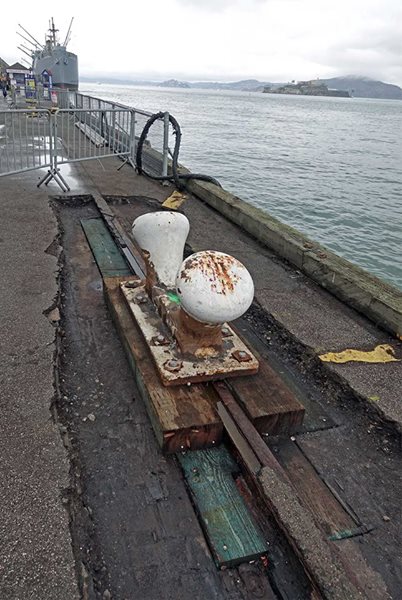 Friday, October 28, 2016 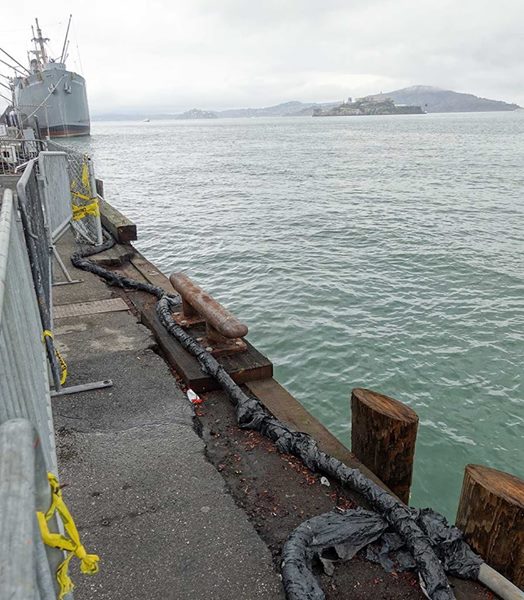 Friday, October 28, 2016
It was raining last night, and on and off today. Note the water in the containment tarps in the photo below. Overall our weather has been much better (dryer, warmer) than our 2007 drydocking that occurred in January.
More coatings today
Good weather. Taking photos of spray painting is a little dicey for the camera, but these give you an idea of what the painting crew needs to wear for safety.
So the yard got the areas on the outer surfaces (not the free floods) blasted and primed yesterday in two shifts. Since a couple of you have emailed asking about the containment enclosed are some photos. It is designed to keep the blast material and overspray in the drydock. The plastic on the bridge/conning tower is for some blowers trying to create a little positive pressure to prevent blast shot from getting up in the periscope shears and the periscope bearings. The five inch gun has protection from above and below to protect the training and elevating gears. We removed the other guns. There are also two very large vacuum filter units on the floor of the barge to create a minor negative pressure.
One of the good news items in this dry-docking has been that because of the generosity of International, Llewellyn Supply Co., Manson Construction, Dutra Group, CS Marine, all the coatings (paint) for this dry-docking has been donated (there may be a couple more donors we will get them all in the acknowledgements). This is probably about $50,000 worth of world class marine coatings. That was the good news, the bad news is that it was all grey and black. In previous drydockings we used pink or other colorful primers, and at minimum alternated colors. When the two colors are grey and black it is a lot harder to see what is happening both during application, and when we come out of the water next dry-docking. So far today it has only been threatening to rain. They are demobilizing (removing from the drydock) the blasting gear, and hope to use the Devprep cleaner in preparation for the next painting step. We all look at the weather forecast a couple of times a day, the coatings can only be applied when it is within the temperature and humidity guidelines of the manufacturers. We really want to make the new Nov 12th schedule for undocking and returning to Pier 45.
First day of blasting to bare metal. These are the areas that will get primer before the topcoats. The weather was OK today, there are predictions of rain tomorrow.
All the major welding is now complete. See the enclosed photos aft. We repaired almost all the badly degraded transverse frames and the shell forward and aft of the pressure hull ("free flood zones"). We did not do most of the platform (horizontal flat plate) or longitudinal framing (vertical, along the fore and aft axis of the boat) either forward or aft that needs to be done. The work we did was critical to maintaining the basic strength of the structure boat forward and aft. By getting this done before the shape distorts we preserve not just the safety of the vessel, but also its integrity as representative of the methods and materials of construction.
It is hard to definitively know the underwater condition of the other museum submarines because most have not been to drydock recently. From what I know, it is very likely that the underwater and wind/waterline hull of Pampanito is one of the best preserved of the museum boats at this point. We still have lacy metal to restore below the waterline during our next dry-docking, and the superstructure above the pressure hull is in need of a lot of steel repair. The next three weeks will be a race to complete sand blasting, cleaning, and coating (paint) of the hull before rain causes more delays.
By the end of the swing shift this evening all the major welding will be done for this drydock. My rough estimate is 2/3rds of the degraded steel below or at the water line has been repaired. This is probably more than during the last four drydockings combined.
Enclosed today are not photos of the repairs, this time they are of the welding crew that did a great job. The welding in the free flood spaces often required climbing is small spaces, working from man lifts, fall protection, etc. We all have bad days, but in 5 weeks of work I only saw smiles and professionals working well together. We really appreciate their work. BZ
The vast majority of the work we are doing in drydock is to protect and restore the fundamental integrity of the hull below and at the waterline. This is critical for safety and the longevity of the museum. However, it is not very sexy, it is hidden from the view of the public.
There are lots of visitor impact restoration projects we wanted to fund that would be easier to do in the drydock, but most were outside our budget this cycle. For example, we want to restore the 5" gun foundation aft. The one we could afford, was to load a Mk 18 torpedo that we have had on loan from the US Navy for over 10 years. The torpedo was waiting for restoration (it came in rough shape,) and because this cut away training torpedo was more delicate than the Mk 14s we have loaded at the the pier. No matter how good a rigger you are, anything loaded by crane at pier 45 is fixed to the earth and will at some point need to mate with the moving boat. In the drydock the crane and the boat move together (and not very much). So today we loaded the torpedo aboard the boat. During the 1960s the torpedo loading hatches, and the deck torpedo loading tray were removed and the visitor stairs added. This makes it much more difficult to load than during WW II. The enclosed photos should be self explanatory, it takes multiple picks to get into the boat. The shipyard crew was well lead by Master Rigger Dave Gans
Any repair done in the boat is at least 10 times more difficult than the same job in the shop. While the torpedo shutter doors are off the boat we are repairing the four shutter doors that are at the wind and water line. This is a big deal. There might not have been enough to hold them together if we had waited another dry-docking. All ten of our torpedo doors work as originally designed, this repair was important to keeping them operating. Many of the other submarine museum have lost the integrity of the doors and operating mechanism.
The frames aft are now all in place, the welding crew is fitting the shell plating.
More steel going in aft. These are major frames.
Enclosed are photos of the progress the welders are making aft.
There is also a photo of the cutting of fresh gaskets for one of the main ballast tank manhole covers.
The weekend rain and wind tore up the containment over the weekend. Work was slowed down due to some internal to the yard problems on Friday and today.
Aft the crew is still cropping out lacy steel. Forward, the frames have been repaired, the shell plating replaced and the studs to hold a zinc replaced.
We had the first rain in months today. We are lucky this is before blasting and painting so it slowed things down, but did not stop the work.
Index:
|

